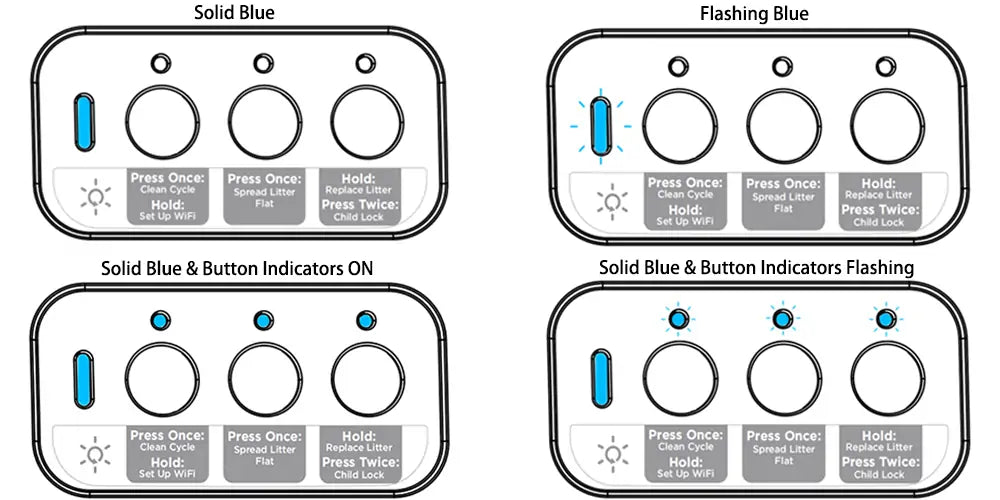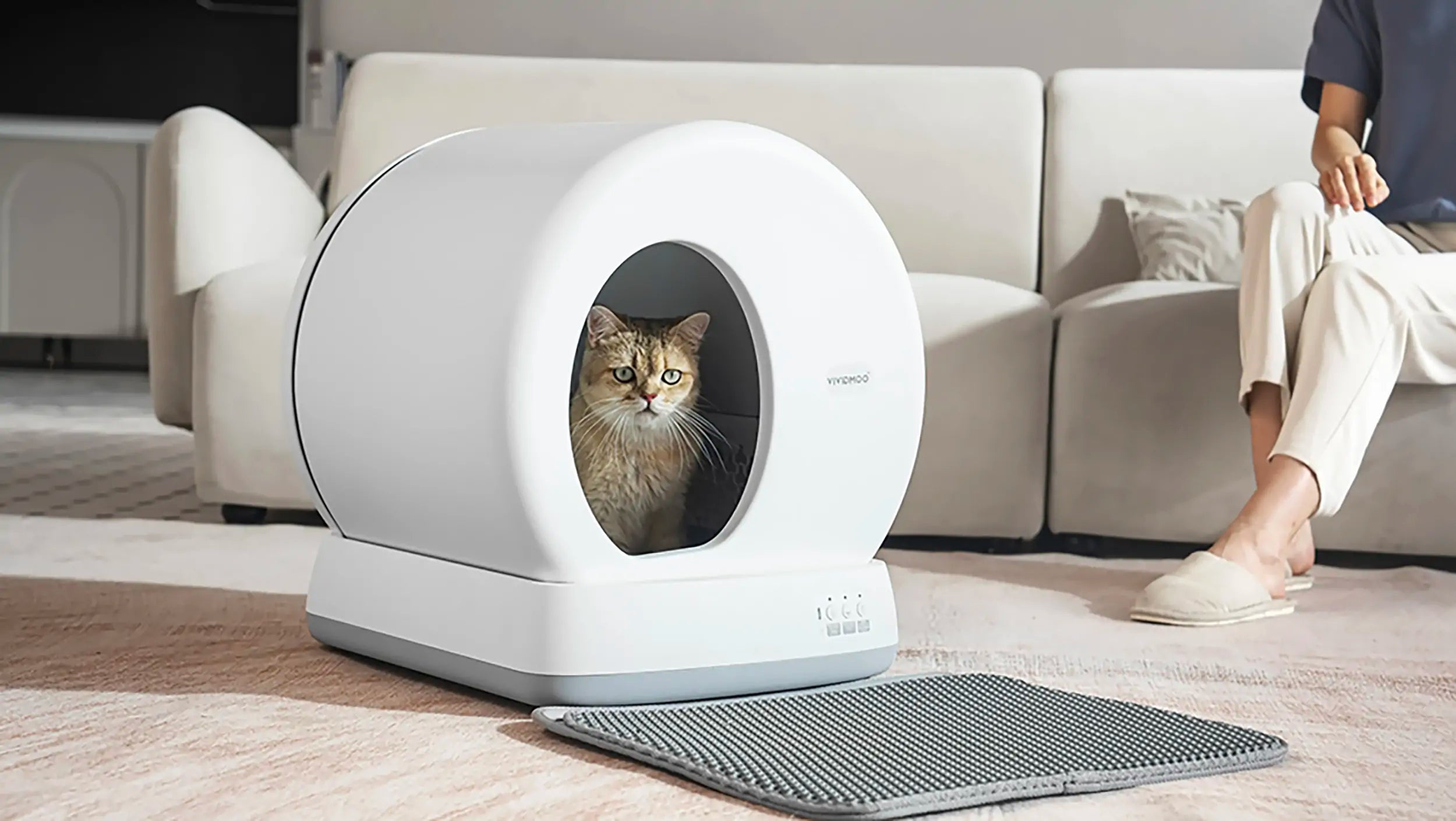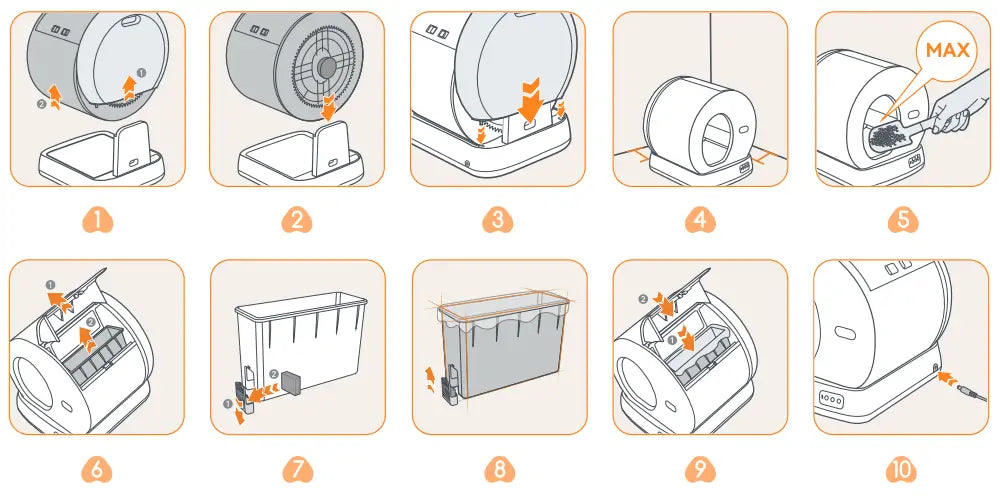PageFly
25-05-2022
Explore Our Adventure
It is not just a lifestyle, it is a a whole new perspective

Why Does My Cat Bite Me?
Introduction
Anyone who's shared a couch and a movie with their feline friend knows the sudden, albeit gentle, nibble on a finger or toe that can come seemingly out of nowhere. This moment, shared between you and your cat, might leave you puzzled, asking yourself, "Why does my cat bite me?" While it's easy to brush off as a quirk of your beloved pet, understanding the reason behind these bites can deepen the bond between you and your feline companion.
In this blog, we'll unravel the mystery behind your cat's biting behavior, exploring the various reasons why cats bite, what they might be trying to communicate, and how you, as a pet owner, can respond in ways that nurture a positive and loving relationship. Whether it's a gentle nibble during a playful moment or a more assertive bite during a stressful time, understanding the language of cat bites is crucial for any cat owner.
The Many Faces of Cat Bites: A Behavioral Insight
At first glance, a bite from your cat might seem like a simple act of aggression or playfulness. However, the reality is far more complex. Cats use biting as a form of communication, and the reasons behind a bite can vary widely, including playful intentions, fear, territorial disputes, or even overstimulation.
Playful Bites: Often light and without the intention to harm, these bites are part of your cat's playful behavior. They mimic the actions cats would use in the wild during hunting or play-fighting with their littermates.
Fear-Induced Bites: When cats feel threatened or scared, biting can be a defensive reaction. Such bites are usually more forceful and accompanied by other signs of fear or aggression.
Territorial Bites: Cats are naturally territorial animals, and bites can sometimes serve as a warning to others, including their human companions, about encroaching on their perceived territory.
Overstimulation Bites: Too much petting or play can lead to overstimulation, resulting in a bite. These bites signal that your cat needs a break from the interaction.
Recognizing the context and type of bite is the first step in responding appropriately and understanding your cat's needs and feelings. Let's delve deeper into these behaviors to find out how to interpret and react to your cat's biting.

When I reflect on my recent 7 Day Jordan Escape by Globus tour, I don’t think I’ve ever experienced so many BIG attractions and highlights in such a short period of time before. As a small country with ancient stories to tell, Jordan makes it easy to have monumental experiences in a short amount of time. You don’t have to plan, take care of any logistics, or fight through the crowds that normally come with such well-known attractions during high season travel.
Status & Button Indicators
Smart cat litter boxes come equipped with various indicators that provide insight into their operation and maintenance needs. Familiarizing yourself with these can help you address issues promptly:
Solid Blue:
Ready for use
Flashing Blue:
Setting up WiFi
Solid Blue & Button Indicators ON:
Firmware upgrading
Solid Blue & Button Indicators Flashing:
Restoring to factory settings

Solid Green:
Cat / weight detecte when stationary
Flashing Green:
Drum returning to Home position
Flashing Green Twice:
Child Lock on/off

Playful Bites: Love Nibbles or Playtime Gone Wrong?
Cats are naturally playful creatures, and their behavior often mimics the hunting and fighting techniques ingrained in their DNA. Playful bites, or 'love nibbles,' are a common part of your cat's playful arsenal, offering a glimpse into their wild instincts. These gentle bites are your cat's way of engaging with you, similar to how they would with their feline siblings. However, when playtime gets too intense, it can sometimes result in a bite that's a bit harder than intended.
A Unique Structure for Unique Functions




Table Of Content
- Downtown Amman: Wasat Al-Balad
- The Ancient Roman City of Jerash
- Amman Accommodation: Kempinski Hotel
- Return after a long week of memories
PageFly
25-05-2022
Explore Our Adventure
It is not just a lifestyle, it is a a whole new perspective

How to Safely Engage in Play:
1, Use toys to create a buffer between your hands and your cat's teeth, encouraging them to bite the toy instead.
2, Incorporate interactive toys that mimic prey movements, such as feather wands or motorized mice, to satisfy their hunting instincts.
3, Recognize when your cat is getting overly excited and pause playtime if necessary, allowing them to calm down before resuming.
Understanding the fine line between playful nibbling and overexcited bites is key to a safe and enjoyable playtime for both you and your cat.

Fear and Stress: The Defensive Bite
Cats, like any other animals, can experience fear and stress, leading to defensive behaviors, including biting. New environments, loud noises, or unexpected handling can trigger these responses. A bite in such circumstances is a clear signal from your cat that they are not comfortable with the situation.
Creating a Calming Environment:
1, Introduce new environments or people slowly and in a controlled manner to reduce stress.
2, Provide a safe space, such as a quiet room or a cozy hiding spot, where your cat can retreat when overwhelmed.
3, Consider the use of pheromone diffusers or calming supplements recommended by veterinarians to help soothe anxious cats.
Smart cat litter boxes can play a role here by offering a consistent and clean environment, reducing stress associated with unclean or unfamiliar litter areas.

Territorial Bites: Asserting Dominance
Cats' territorial behavior can sometimes result in biting, especially if they feel their space is being invaded. This behavior is a throwback to their wild ancestors, for whom territory was crucial for survival. Your cat views your home as their territory, and certain actions might be perceived as threats.
Managing Territorial Behavior:
1, Ensure your cat has enough space, especially in multi-pet households, to prevent territorial disputes.
2, Provide multiple resources (food bowls, water dishes, litter boxes) to minimize competition.
3, Regularly engage in play and bonding activities to reinforce your relationship and reduce territorial aggression.
Overstimulation: Too Much of a Good Thing
Cats enjoy affection and play, but there's a limit to how much stimulation they can handle before they become overstimulated, leading to a bite. This is their way of saying, "I've had enough."
Recognizing Signs of Overstimulation:
1, Tail lashing, flattened ears, or dilated pupils are key indicators. 2, Gradually decrease the intensity of petting or play as you notice these signs. 3, Teach everyone in the household to recognize and respect these boundaries to ensure interactions remain positive.
Understanding and Redirecting Your Cat's Biting Behavior
Understanding why your cat bites is the first step towards addressing this behavior. By recognizing the type of bite and the context in which it occurs, you can better respond to your cat's needs and work on redirecting their biting behavior towards more appropriate outlets.

Conclusion
Biting is a natural part of cat behavior, serving as a communication tool for our feline friends. By understanding the reasons behind bites and learning to interpret the subtle signs our cats give us, we can foster a deeper, more respectful relationship with them. Patience, observation, and consistent behavior management are key. And remember, technology like smart cat litter boxes can provide insights into your cat's health and well-being, contributing to a harmonious living environment for both you and your pet.

Hot Tip: My flight was early morning, so I left the resort about 10pm. Had I known how great the Dead Sea Resort and Spa was, I would have delayed my flight until the following day and stayed an extra night and morning.



Author

PageFly
Tags
Travel
Tour Guide
You May Also Like
Want To Receive More Travel Guidance?
Follow us to receive the latest update on our journey experience














